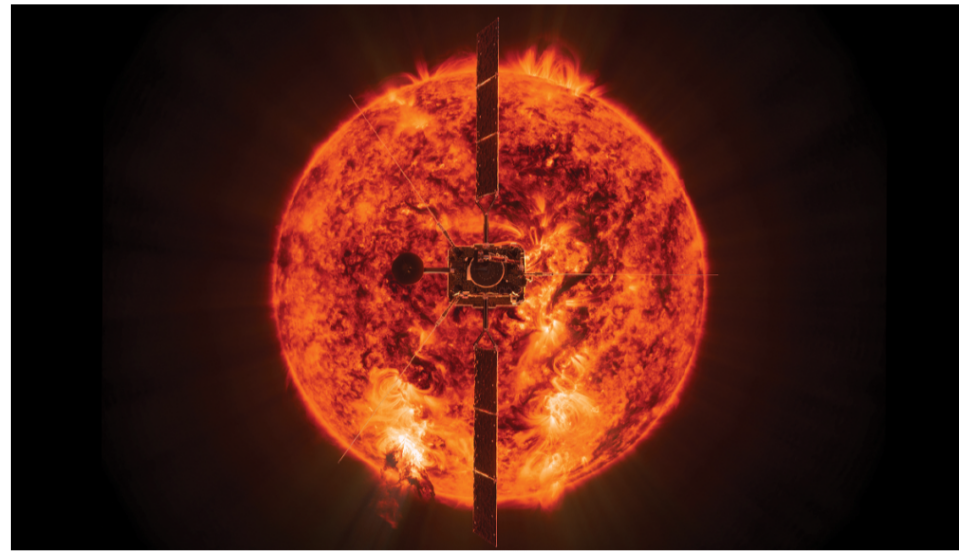By Heather Goss.
25 August 2022.
As solar max approaches, new tech is on call.
We are quickly approaching an auspicious time for solar science. An impressive cadre of Sun-targeted missions has recently come online to replace or support an aging fleet of spacecraft, just as solar max is about to set in. In our September issue, Eos is staring straight into this bright future.
In February 2020, Solar Orbiter launched from Florida, carrying 10 state-of-the-art instruments to make the closest ever observations of the Sun.
Daniele Telloni and colleagues, in “A New Journey Around (and Around) the Sun,” describe for us “the groundbreaking observations that Solar Orbiter has made already,” such as the “short-lived, small-scale flickering bright spots, nicknamed ‘campfires,’ in the solar corona.” Not only will this joint European Space Agency–NASA mission shed new light on the unsolved mysteries of the Sun, but also it’s revealing a new side of Venus from its 2020 flyby.

We dive into the Sun—in the only way we can—in our next feature, “Shake, Rattle, and Probe.”
Helioseismology is a burgeoning discipline that allows physicists to better understand the structure of our star. They also have, as you’ll read, some of the best mission names—GONG, BiSON—and science metaphors (I won’t spoil these) to allow us to visualize the Sun’s roiling interior.
Finally, as we ramp up to solar max, we talked to researchers about what’s in store for study with all the new technology available. In “11 Discoveries Awaiting Us at Solar Max,” get excited about peering inside coronal mass ejections, creating “Sun to mud” predictions, and better understanding magnetic fields throughout our solar system.
I’d like to pause here and mention that shortly after completing his insightful look into innovative solar science in this issue, Daniele Telloni joined our panel of Eos Science Advisers. We welcome him along with around a dozen new advisers who came on board this summer for a 2-year term. If you are an AGU member and would like to represent your discipline’s section by directing the Eos editing team to innovative and exciting coverage in the Earth and space sciences and evaluating proposals submitted by scientist-authors, talk to your section leadership about volunteering with us.
We need more experts passionate about developing a worldwide culture that trusts in science, and Science Advisers contribute enormously to that mission during their time with Eos. Our thanks go out to the Science Advisers who rolled off this summer, and to those with us now helping to create great issues like this one!
Heather Goss, Editor in Chief.
Citation, Goss, H. (2022), Brighter skies ahead, Eos, 103, https://doi.org/10.1029/2022EO220400. Published on 25 August 2022.

